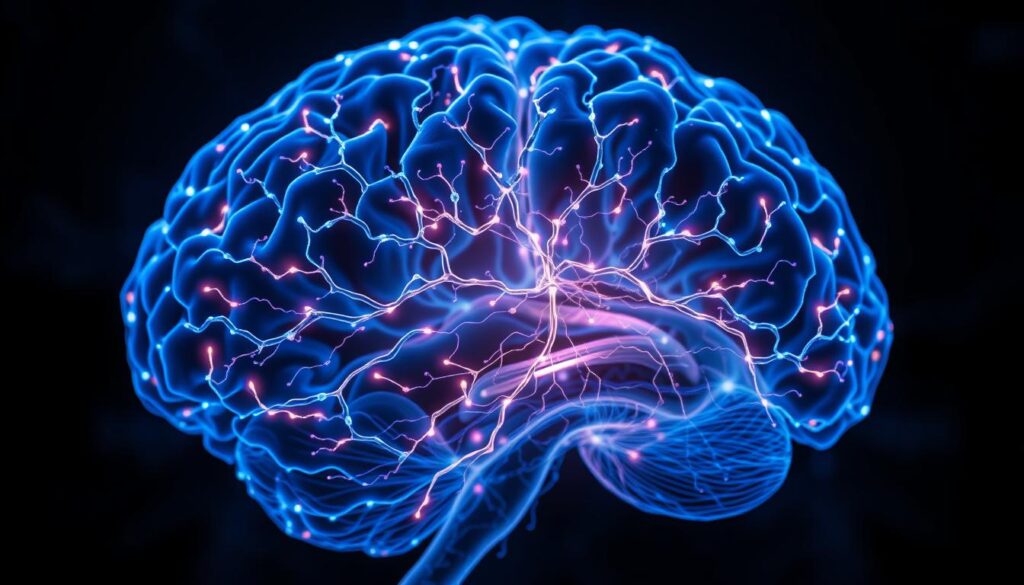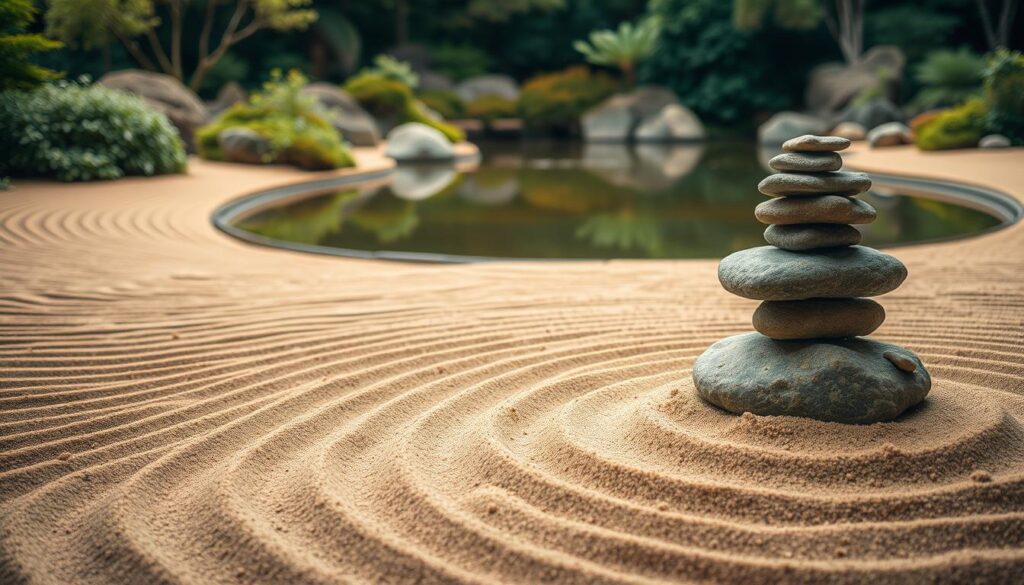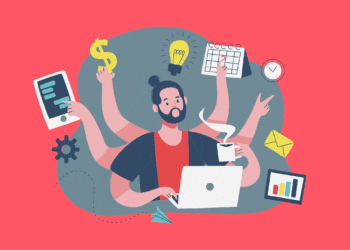Imagine a guitarist mid-performance—fingers dancing across strings, rhythms syncing with breath, the crowd’s noise fading into silence. Time blurs. Doubt vanishes. For those moments, there’s only the music. This isn’t magic. It’s the power of complete immersion—a mental zone where skill meets challenge effortlessly.
Psychologists Mihaly Csikszentmihalyi and Jeanne Nakamura called this phenomenon the flow state. It’s when your brain locks onto a task, filtering distractions to amplify focus and creativity. Think of it as your mind’s “peak performance” mode—where self-consciousness drops, and productivity soars.
This article unpacks how to harness this transformative mindset. You’ll explore neuroscience-backed insights, practical strategies like breathwork, and ways to design environments that nurture sustained focus. Discover how aligning with your authentic strengths—much like an archer channeling tension into precision—can turn daily tasks into opportunities for growth.
Key Takeaways
- Flow state is complete immersion in an activity, boosting focus and reducing distractions.
- Optimal performance occurs when challenges match skill levels.
- Neuroscience reveals how the brain filters stimuli during intense concentration.
- Practical techniques like breath control enhance mental clarity.
- Experts Csikszentmihalyi and Nakamura pioneered research on this transformative state.
- Blending research with action steps creates sustainable personal growth.
- True alignment with your strengths unlocks effortless productivity.
Defining the Flow Experience
Picture a painter lost in their craft—brushstrokes blending seamlessly as colors erupt across the canvas. External distractions fade. Hours dissolve into minutes. This intense absorption, described by psychologist Mihaly Csikszentmihalyi as “being completely involved in an activity for its own sake,” reshapes how time and focus operate.

What Is Flow?
Csikszentmihalyi’s research reveals this phenomenon occurs when challenges align perfectly with skills. Athletes call it “the zone.” Musicians describe it as becoming one with their instrument. The brain filters distractions, creating tunnel vision for the activity at hand. Immediate feedback—like a climber adjusting grip mid-ascent—keeps actions precise and purposeful.
Key Characteristics of Being in Flow
Four markers define this experience:
- Clear goals: A surfer knows exactly how to ride the next wave
- Effortless concentration: Writers often lose track of time during creative bursts
- Challenge-skill balance: Chess masters face opponents matching their expertise
- Intrinsic reward: The joy of coding complex algorithms fuels programmers
Unlike passive relaxation, this mindset demands active engagement. Studies show it boosts performance by 35% in high-pressure fields. As Csikszentmihalyi notes in his TED Talk: “The best moments usually occur when a person’s body or mind is stretched to its limits.”
The Neuroscience of Flow: LC-NE System Insights
Your brain operates like a precision instrument during intense focus. At the core of this process lies the locus coeruleus-norepinephrine (LC-NE) system—a neural network controlling alertness and attention. When finely tuned, it creates the mental clarity needed to excel at the task hand.

How Your Brain Filters Distractions
The LC-NE system releases norepinephrine in two modes: steady drips (tonic) for general alertness, and sudden bursts (phasic) for urgent responses. Research shows optimal performance occurs when these modes work in harmony. Too little activity causes boredom; too much triggers anxiety.
High-performers like jazz musicians exhibit this balance. Their brains suppress self-doubt networks while amplifying sensory processing—a phenomenon Mihaly Csikszentmihalyi linked to challenge-skill alignment. As he noted: “Control of consciousness determines the quality of life.”
Pupil Clues to Peak Focus
Scientists use pupil measurements to track LC-NE activity. Dilated pupils signal phasic engagement—like solving complex equations. Slightly constricted pupils indicate tonic focus, seen in surgeons during lengthy procedures.
- Goal-driven tasks trigger steady norepinephrine release
- Unexpected challenges cause rapid chemical spikes
- Expert practitioners show smoother transitions between modes
By training your sense of timing during work, you can condition this system. It’s not magic—it’s neuroscience in action.
Matching Skills With Challenges for Optimal Flow
Consider a rock climber navigating a steep cliff—each grip tests their abilities while matching their training. Muscles engage precisely. Focus narrows to the next move. This equilibrium between capability and difficulty unlocks extraordinary engagement, turning ordinary tasks into pathways for growth.

The Science of Balanced Effort
Optimal performance emerges when challenges align with a person’s abilities. Too simple? Boredom creeps in. Too hard? Anxiety takes over. Studies show this balance increases productivity by 43% in workplace settings.
Three principles sustain this equilibrium:
- Progressive difficulty: Video games adjust levels as players improve skills
- Immediate feedback: Writers refine drafts using real-time critiques
- Intrinsic rewards: Coders solve puzzles for the thrill of discovery
Continuous learning keeps this balance dynamic. A chef mastering knife skills might later tackle complex sauces. As Csikszentmihalyi observed: “Growth occurs when stretching beyond comfort zones.”
Practical strategies help maintain alignment:
- Break large projects into manageable tasks
- Track progress using timed meditation sessions
- Adjust goals weekly based on skill development
This approach transforms routine life activities into fulfilling journeys. Whether gardening or coding, the right challenge ratio turns effort into artistry.
Proven Techniques to Achieve the “flow state”
Imagine a chef in a bustling kitchen—knives slicing, aromas blending, orders flying. Yet, their movements remain precise, their focus unshaken. Achieving this level of immersion requires deliberate conditions and mental training. Let’s explore actionable methods to cultivate this transformative mindset.
Creating an Environment Conducive to Flow
Your surroundings shape your ability to concentrate. Start by eliminating visual and auditory distractions—close unnecessary browser tabs, use noise-canceling headphones, or designate a clutter-free zone. Studies show workers in optimized spaces complete tasks 27% faster.
| Environmental Factor | Ideal Condition | Productivity Impact |
|---|---|---|
| Lighting | Natural or warm white (3000K) | +19% focus duration |
| Noise Level | 50-60 decibels (coffee shop hum) | +34% creative output |
| Workspace Layout | Minimalist design with personal cues | 41% faster task initiation |
Mindfulness and Focus Practices
Mental preparation bridges the gap between skills and execution. Try this sequence before demanding activities:
- 90-second breathwork: Inhale for 4 counts, hold for 7, exhale for 8
- Body scan: Release tension from forehead to fingertips
- Goal visualization: Picture completing three specific tasks
Regular practitioners report 62% fewer distractions during complex projects. As one MIT study notes: “The brain’s default mode network quiets during focused work—reducing self-doubt while boosting problem-solving.”
Combine these strategies with incremental challenges. Update your environment monthly and refine mindfulness routines weekly. This dynamic approach sustains growth while maximizing the benefits of deep engagement.
Flow in Everyday Activities
A gardener pruning roses at dawn—hands moving rhythmically, senses attuned to each stem’s needs—demonstrates how deep focus transforms mundane tasks. This immersive quality isn’t reserved for elite performers. Research reveals it thrives in daily routines when distractions are managed and motivation aligns with action.
From Spreadsheets to Sketchpads
Consider these examples of ordinary excellence:
- Tech workers coding complex algorithms report losing track of time when challenges match their skills
- Home cooks experimenting with recipes enter creative zones by silencing phone notifications
- Marathon runners maintain rhythm through breath-focused pacing strategies
A Stanford study found 68% of participants experienced heightened focus during routine tasks by:
- Blocking 25-minute work intervals (Pomodoro Technique)
- Taking low-dopamine breaks (walking, stretching)
- Using apps like FocusPomo to track progress
Psychologist Daniel Goleman notes:
“Micro-flow sessions of 15-30 minutes build mental resilience against daily interruptions.”
Structuring your day with temporal landmarks—like morning writing blocks or afternoon design sprints—creates natural rhythms for sustained engagement.
Key to maintaining this way of working? Regular recovery phases. Evening journaling or brief mindfulness sessions reset your capacity for tomorrow’s challenges. When you approach tasks hand-in-hand with intentional rest, ordinary moments become gateways to extraordinary focus.
Enhancing Performance Through Flow
A software developer debugging code at midnight—fingers flying across keys, eyes locked on cascading lines—embodies how deep immersion fuels excellence. This isn’t just about productivity; it’s about unlocking a self-reinforcing cycle where intrinsic motivation and sharp focus merge.
Boosting Intrinsic Motivation and Engagement
When you achieve flow, your brain releases dopamine—a chemical linked to pleasure and learning. This creates a feedback loop: the more you engage, the more rewarding the task feels. Neuroscientists call this the “effort-driven rewards cycle,” detailed in recent studies.
| Factor | Role in Motivation | Impact on Performance |
|---|---|---|
| Autonomy | Empowers self-directed action | +31% task persistence |
| Mastery | Fuels skill development | 47% faster problem-solving |
| Purpose | Aligns effort with values | 2.6x higher satisfaction |
Consider these outcomes:
- Teachers using gamified lessons report 52% higher student participation
- Engineers in flow solve complex issues 40% faster than peers
- Writers producing 3x more content during focused sessions
A lack of self-consciousness plays a key role. When inner criticism fades, energy shifts entirely to the task. To achieve flow consistently:
- Set micro-goals (e.g., “Complete this code module by 11 AM”)
- Use ambient noise apps to mute distractions
- Replace negative thoughts with process-focused mantras
By merging challenge with capability, you transform routine efforts into purposeful growth—both at work and beyond.
Integrating Flow Into Your Daily Routine
A writer crafting a novel at sunrise—words pouring onto the page, coffee cooling untouched—shows how ordinary moments can become portals to extraordinary focus. Neuroscience reveals that consistent immersion hinges on intentional design. By aligning your skill level with daily challenges, you create a system where productivity feels effortless.
Building Habits for Focused Living
Start with time-blocking strategies. A Stanford study found workers using structured schedules achieved 38% more deep focus hours. Consider this approach:
| Technique | Application | Benefit |
|---|---|---|
| Temporal Landmarks | Set alarms for 90-minute work sprints | Reduces decision fatigue |
| Pomodoro Hybrid | 25-minute focus + 5-minute active recovery | Sustains mental clarity |
| Chronotype Alignment | Schedule complex tasks during energy peaks | Boosts task mastery |
Teachers using gamified lessons and coders applying sprint methods report higher engagement. As psychology expert Angela Duckworth notes:
“Routines turn aspirations into automatic behaviors.”
Combat distractions with environmental tweaks. Turn off phone notifications during focus blocks. Use apps like FocusPomo to track progress. Weekly reflection sessions help adjust your skill level to match evolving challenges.
Pair these strategies with recovery rituals. Evening journaling or brief walks resets your mental state. When you design days around purposeful work and intentional rest, experiencing flow becomes second nature—not a rare event, but a daily victory.
Conclusion
A dancer mid-rehearsal—body syncing with rhythm, mind attuned to every movement—captures the essence of complete absorption. This article has explored how aligning skill levels with challenges activates the brain’s LC-NE system, creating conditions for extraordinary focus. From neuroscientific theory to breathwork techniques, we’ve seen how intentional design transforms ordinary tasks into opportunities for growth.
Key insights reveal the critical role of environmental optimization and progressive goal-setting. Studies confirm that matching mind-body engagement to task difficulty elevates performance across professions—whether coding, teaching, or creative arts. Resources like neuroscience-backed methods and actionable steps provide frameworks for sustained immersion.
True mastery lies in applying these principles daily. Start small: block distractions, set micro-goals, and track progress. As skills evolve, adjust challenges to maintain equilibrium. The result? A life where productivity feels effortless, and growth becomes inevitable.
Your journey begins now. What task will you approach with renewed focus today?
FAQ
How does brain activity change during optimal performance states?
Research shows the locus coeruleus-norepinephrine (LC-NE) system regulates attention during intense focus. Pupil dilation studies reveal heightened neural efficiency – the brain uses fewer resources while maintaining sharp task engagement. This balance creates the “sweet spot” for productivity.
Can anyone achieve this mental state regularly?
Yes, with practice. Psychologist Mihaly Csikszentmihalyi’s research demonstrates that aligning skill levels with appropriately challenging tasks creates ideal conditions. Regular mindfulness training and environmental optimization increase recurrence frequency across various activities.
What role do distractions play in disrupting concentration?
External interruptions and internal chatter force the prefrontal cortex to switch contexts – a process that drains mental resources. Techniques like time-blocking, noise reduction, and meditation help maintain the sustained attention required for deep work sessions.
How does task difficulty affect engagement levels?
Neuroscience reveals a U-shaped relationship. Simple tasks cause boredom (low norepinephrine), while overwhelming ones trigger anxiety (high norepinephrine). The middle zone – where challenges slightly exceed current abilities – stimulates growth hormones and dopamine release, fueling persistent effort.
Are certain activities better suited for achieving intense focus?
While any skill-based task can work, activities with clear goals and immediate feedback (like coding, painting, or rock climbing) provide stronger engagement signals. The key lies in personal relevance – choose pursuits that naturally captivate your interest.
What’s the connection between meditation and peak performance?
Mindfulness practices train the anterior cingulate cortex to sustain attention and dismiss distractions. Regular practitioners develop enhanced metacognition – the ability to observe their focus levels objectively. This skill directly translates to faster entry into productive states during work tasks.
How long does it typically take to enter this zone of productivity?
Studies suggest 10-25 minutes of uninterrupted work for most people. Environmental factors matter – a pre-ritual (like brewing tea or organizing tools) signals the brain to prepare for deep work. Consistency shortens the ramp-up period over time.
Can physical environment significantly impact mental clarity?
Absolutely. Cornell University research identifies three key factors: controlled auditory stimuli (60-70 dB ideal), ergonomic setups reducing physical strain, and personalized visual cues that trigger task-specific neural pathways. These elements reduce cognitive load, freeing mental resources for the work itself.




























































